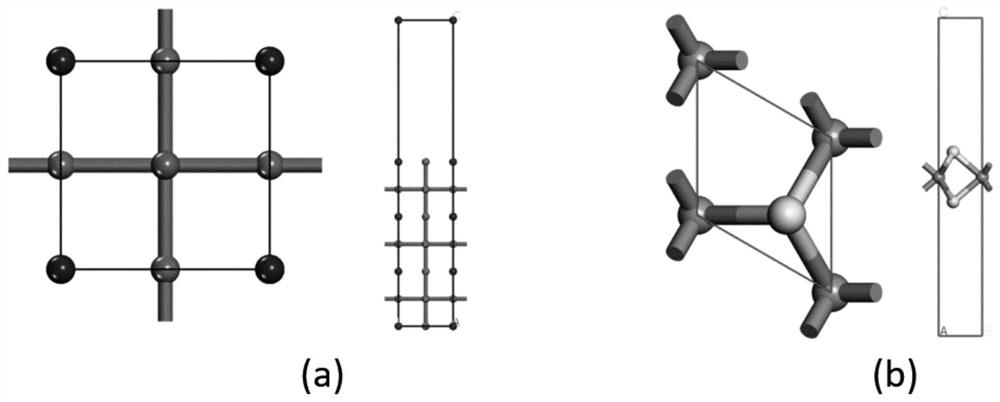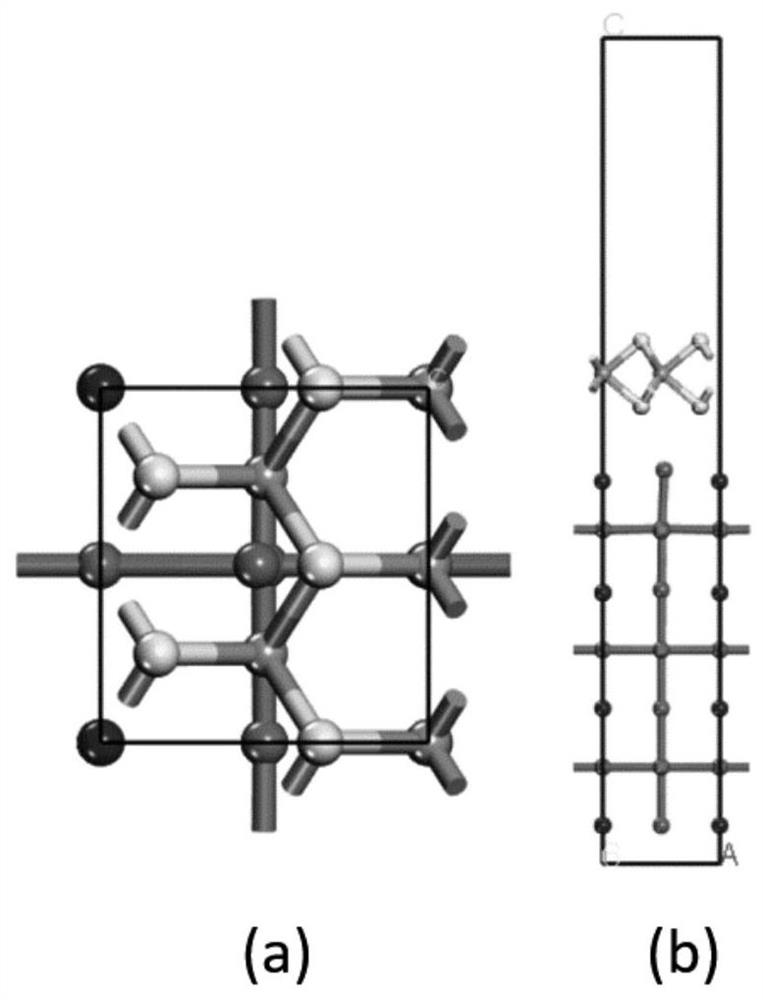A simulation method for the optical properties of cesium tin bromide-molybdenum disulfide composites
A technology of molybdenum disulfide and optical properties, applied in the field of materials science, can solve the problems of insufficient optical properties, low carrier mobility of cesium tin bromide, etc., and achieves improved carrier mobility, excellent environmental protection, and improved optics Effects of Features
- Summary
- Abstract
- Description
- Claims
- Application Information
AI Technical Summary
Problems solved by technology
Method used
Image
Examples
Embodiment 1
[0045] Comply with above-mentioned technical scheme, present embodiment provides a kind of CsSnBr 3 / MoS 2 Composite model and CsSnBr 3 A method for improving optical properties, the perovskite used is CsBr-CsSnBr 3 (100) surfaces. The specific steps are:
[0046] S1. In the Materials Studio 2017 software, respectively establish 7 layers of CsBr-CsSnBr 3 (100) surface and monolayer molybdenum disulfide (MoS 2 ) model, such as figure 1 As shown, simulated by the CASTEP module in the Materials Studio 2017 software package;
[0047] S2. To illustrate the van der Waals interaction between cesium tin bromide and molybdenum disulfide, a hybrid semi-empirical solution of OBS is applied in DFT-D to introduce damping atom pairwise dispersion correction.
[0048] The configuration of the valence atom is 4d for the Mo atom 5 5s 1 , the S atom is 3s 2 threesome 4 , Cs atom is 5s 2 5p 6 6p 1 , the Sn atom is 4d 10 5s 2 5p 2 , Br atom is 4s 2 4p 5 .
[0049] The cut-off ...
Embodiment 2
[0065] Comply with above-mentioned technical scheme, present embodiment provides a kind of CsSnBr 3 / MoS 2 Composite model and CsSnBr 3 A method for improving optical properties, the perovskite used is SnBr 2 -CsSnBr 3 (100) surfaces. The specific steps are:
[0066] Step S1 and step S2 are the same as in embodiment 1, except that the surfaces of the two cases are different.
[0067] The above results are analyzed as follows:
[0068] MoS 2 The energy band structure diagram is as Figure 5 As shown in (a), SnBr 2 -CsSnBr 3 (100) The surface energy band structure diagram is as follows Figure 5 As shown in (c), SnBr 2 / MoS 2 Composite model energy band structure diagram as shown in Figure 5 (e) shown. MoS 2 and SnBr 2 -CsSnBr 3 The surface of (100) shows a direct band gap, and after forming a heterojunction, the bottom of the conduction band is mainly composed of MoS 2 contribution, the valence band top is mainly composed of CsSnBr 3 contribution, and simila...
PUM
 Login to View More
Login to View More Abstract
Description
Claims
Application Information
 Login to View More
Login to View More - R&D
- Intellectual Property
- Life Sciences
- Materials
- Tech Scout
- Unparalleled Data Quality
- Higher Quality Content
- 60% Fewer Hallucinations
Browse by: Latest US Patents, China's latest patents, Technical Efficacy Thesaurus, Application Domain, Technology Topic, Popular Technical Reports.
© 2025 PatSnap. All rights reserved.Legal|Privacy policy|Modern Slavery Act Transparency Statement|Sitemap|About US| Contact US: help@patsnap.com



